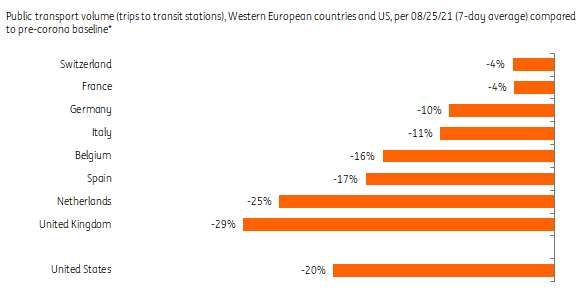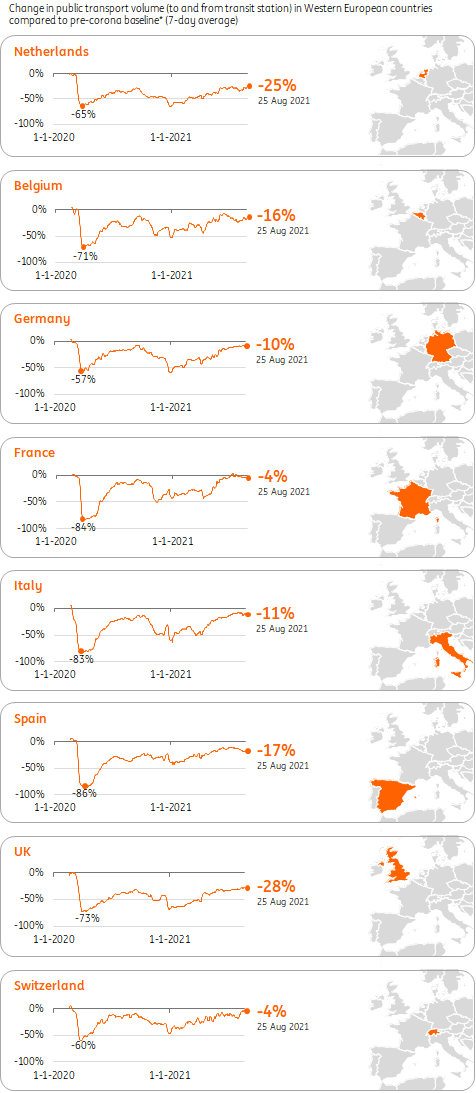European public transport shows signs of sustained recovery
Public transport volumes are showing signs of recovery across Europe as lockdowns ease. France and Germany are already close to pre-Covid levels but the Netherlands and the UK are still seeing significantly fewer travellers. These economies, in particular, have big services sectors where hybrid working and less commuting are part of the new normal
Real signs of recovery in European public transport usage
As vaccination rates increase across Europe, companies, schools and universities are embarking on the ‘new normal' and more travellers are getting back on buses and trains. But the recovery is uneven. Traffic in Switzerland, Germany and France is close to pre-virus levels, being just about 10% down. Passenger volumes in the Netherlands and the United Kingdom are still significantly lower, by around 25 to 30%. In the US, traffic volumes are somewhere in the middle.
European bus, train and metro volumes suffered heavily in the pandemic with passenger losses of 60 to over 80% during the first wave and 40% to 60% during the second and third waves. With particularly strict lockdown regimes, Italy, Spain and France saw the largest initial setbacks.
Recovery of public transport traffic differs across European countries

Recovery will continue but it's going to take time
Public transport figures had previously shown structural growth with increasing populations and, notably, urban workforces in European countries, and this remains a driving force. Although we expect the recovery to continue this autumn, travel behaviour has changed and a full return of volumes will take time in several countries. Recent experience has also indicated that passenger transport remains sensitive to new waves of infections and social distancing measures.
Economic structure partly explains country differences
The structure of the economy is one factor which explains the recovery experience across Europe. A relatively large share of workers employed in financial services, information & communications, and consultancy worked from home during the pandemic. And that's still the new normal in many businesses where only about 25 to 50% of staff have returned to the office.
Transport volumes lag where services dominate
Where services dominate, notably in the UK and the Netherlands, public transport volumes consequently lag the most so far, which is also illustrated by less traffic in urban centres such as London and Amsterdam. This is expected to keep traffic figures below pre-virus levels for longer, before structural growth offsets the losses. Cultural preferences, the general usage of public transport for private and business purposes as well as population density and urbanisation may also be contributing to differences. In the Netherlands, for instance, research shows a relatively large share of people working from home used to travel by public transport.
Recovery in European public transport usage after an unprecedented drop

This publication has been prepared by ING solely for information purposes irrespective of a particular user's means, financial situation or investment objectives. The information does not constitute investment recommendation, and nor is it investment, legal or tax advice or an offer or solicitation to purchase or sell any financial instrument. Read more
Download
Download article